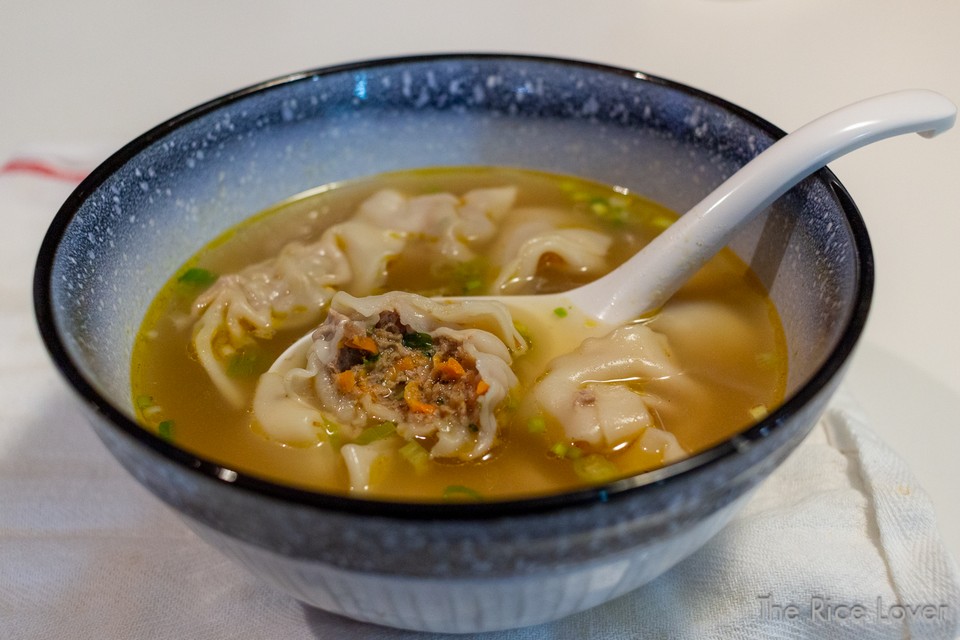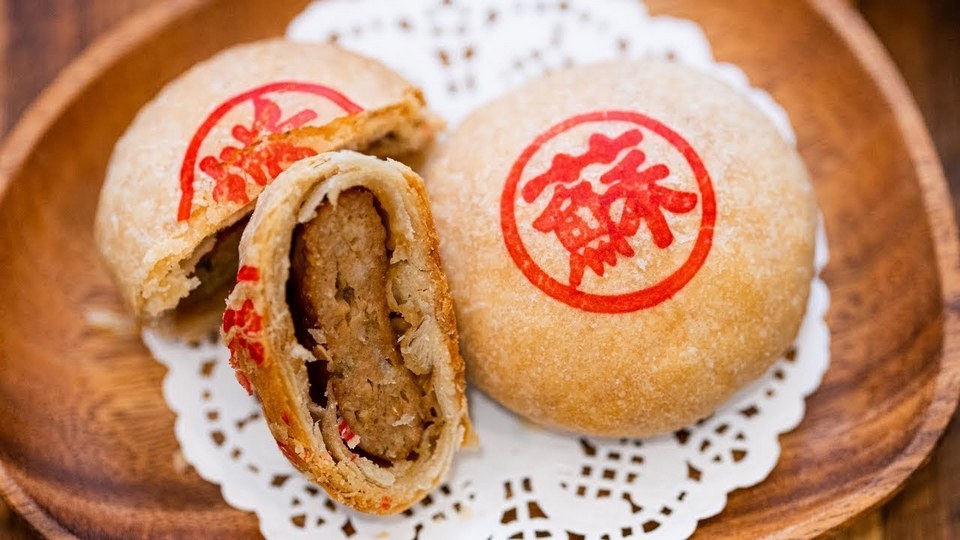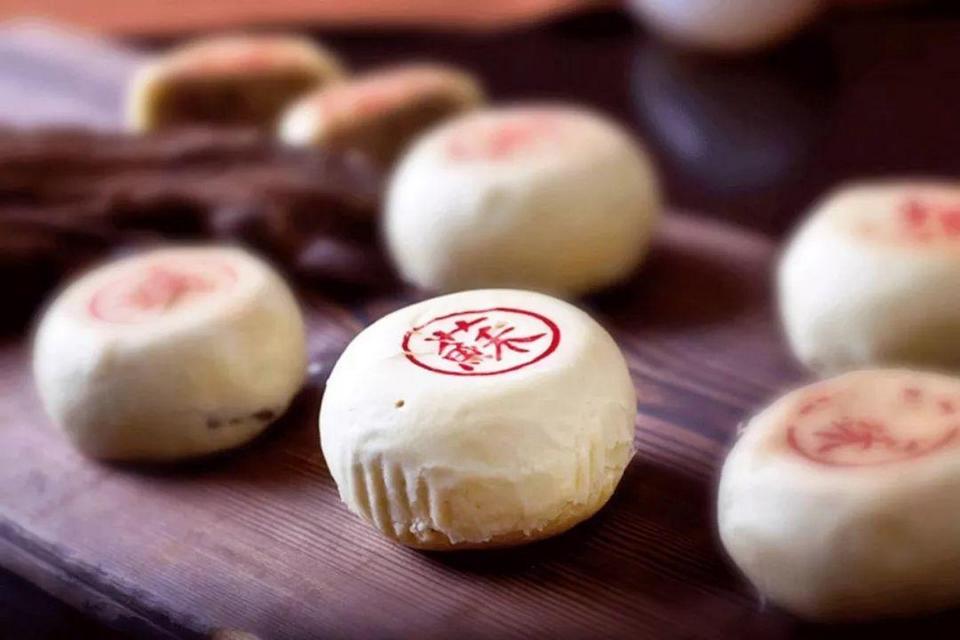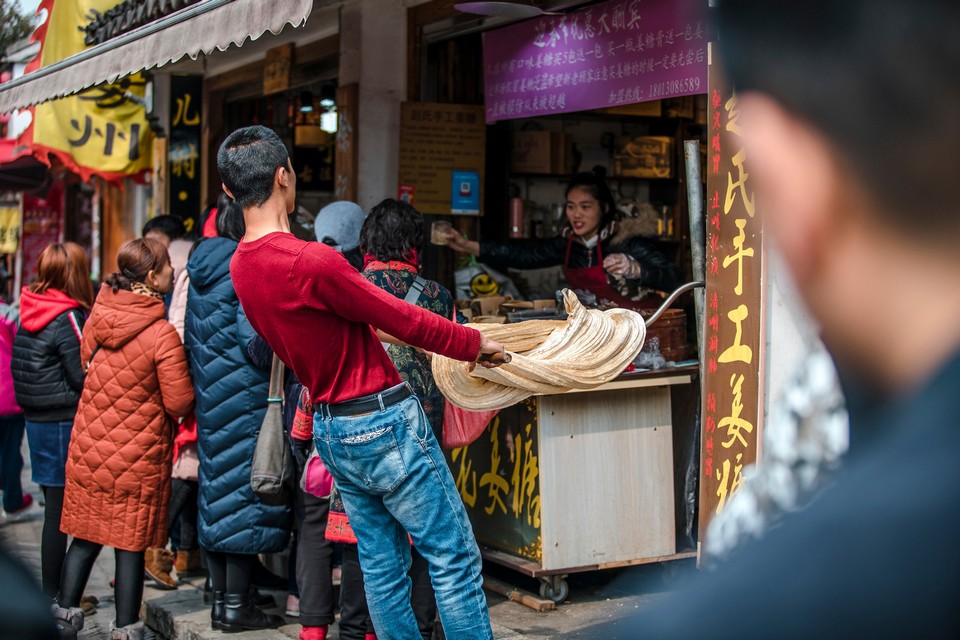Suzhou is a famous Chinese city with many scenic spots and a long-standing culture. Besides, Suzhou cuisine is also an attractive destination for tourists. The dishes in Suzhou are rich in traditional flavors and prepared from fresh ingredients, giving visitors interesting culinary experiences. Suzhou specialties focus on flavor, color, and nutrition, reflecting the unique and sophisticated culture. So, what to eat in Suzhou? Let’s check out our suggested 13+ top Suzhou famous food, must-eat and best Suzhou street food as well as best food in Suzhou as follows!
- What to eat in Guangzhou? 15 most famous & must try food in Guangzhou
- What to eat in Shenzhen? 15 popular dishes & famous food in Shenzhen you have to try
- What to eat in Macau? 15 most famous & must try food in Macau for foodies
- What to eat in Shanghai Disneyland? Pocket 10 Extremely Adorable & best food in Shanghai Disneyland
- What to eat in Sichuan? 15+ most famous traditional & best Sichuan street food




Let’s explore the mentioned dishes in Suzhou!
Yangcheng Hairy Crab (# what to eat in suzhou)

The Yangcheng Hairy Crab is found only in Yangcheng Lake. They have a dark green carapace, ivory underbelly, golden hair, and claws. The females can be identified by their rounded underbelly, while males have a pointed, V-shaped middle and more leg hair. Males also tend to be larger.
Hairy crabs are sweet, fatty, fragrant, and rich in nutrients, making them an annual culinary obsession for many Chinese in the world. The superior water, air, and environmental quality of Yangcheng Lake contribute to the health and sweet taste of the crabs.

The locals of Suzhou have learned to make the most of the flavor of hairy crabs through simple yet sophisticated preparation methods. The recipe for hairy crab is almost spartan in its simplicity – the crab is steamed and then eaten with a sauce of vinegar and ginger. It makes the crab meat retain its natural flavor and characteristic deliciousness. However, it is special that Yangcheng hairy crab is eaten with rice wine – a traditional specialty wine of this region. Rice wine with its unique aroma will enhance the sweet and fatty taste of crab and help with better digestion after a meal.

In Autumn, every March, Chinese farmers source the crab larvae from the mouth of the Yangtze River where larval development occurs in brackish water at the confluence of fresh and seawater. They are then transferred to the lake, where they live in netted enclosures, hibernating in the winter months by burrowing into the lake bed. This is also the busiest time for restaurants and eateries in Suzhou when tourists from all over come to enjoy the unique flavor of hairy crabs.



However, to ensure keep the wonderful flavor of hairy crab, you avoid eating with persimmons because this combination can cause upset stomach symptoms. Anyway, Yangcheng hairy crab is a unique and unforgettable culinary journey when traveling to Suzhou.
Pan-fried Buns (Shenjianbao or Shenjian mantou) (# suzhou street food)

Shengjian mantou, a unique pan-fried variety, originally appeared as a part of traditional dim sum meals. The place of origin is usually associated with Suzhou and Shanghai, but today these delicious hearty dumplings can be found in other parts of China, as well as in numerous Chinese restaurants around the world.



Pan-fried buns are beautiful little dumplings, with crispy skins and filled with minced pork, vegetable, or shrimp as the base, often incorporated with cabbage and chives, then infused with soy sauce, sesame oil, and occasionally ginger and garlic.
The recipe is straightforward, however, the meticulousness and sophistication in the process have created a unique and unmistakable flavor. The pan-fried buns should be eaten as well as being hot. The crust has a soft texture with a golden, crispy base. The filling is very flavorsome and moist.

This cooking style originates from Northern China but has quickly become a well-known dish in Suzhou. These days, pan-fried dumplings are available on every street corner of the city markets, satisfying the love and appetite of locals and tourists alike.
Pan-fried buns for breakfast or a snack are an ideal choice. You can find this food at street stalls that specialize in the preparation of this nutritious delicacy.
Squirrel Fish (# suzhou famous food)

Squirrel fish is a traditional dish in Suzhou, China. The story goes that when Emperor Qianlong (1711-1799) traveled incognito in the Southern Yangtze River areas, he ate Suzhou food daily, saw a carp frisking on the holy table, and ordered it cooked for him. Knowing it was the emperor’s order, the chef spared no effort in flavoring and seasoning. Squirrel fish is made from catfish, a freshwater fish with sweet and fatty meat, prepared with many spices such as onions, garlic, chili, ginger, sugar, vinegar, and soy sauce. The dish is shaped like a jumping squirrel, hence its name. The fillets are cut into a crosshatch pattern with plenty of crispy surface area and maximum sweet and sour sauce coverage.




The way to make fish lentils is quite simple but requires good techniques to keep the deliciousness and crispiness of the fish. The fish is washed, cut into bite-sized pieces, and marinated with salt, pepper, and tapioca starch. Then, the fish is fried in hot oil until golden and crispy. Next, the fish is arranged in a squirrel shape on a plate, sprinkled with a special sauce boiled from the spices mentioned above. Finally, sprinkle onions and pepper on top to enhance the flavor.

Squirrel fish is sweet, sour, spicy, and salty. It is very suitable to eat with white rice. This dish is not only a specialty of Suzhou but also a symbol of the rich and diverse Chinese cuisine.
Taihu Lake Three Whites (Taihu Sanbai)

Another signature dish in Suzhou refers to the three kinds of river fresh products in China’s Taihu Lake–white fish, whitebait, and white shrimp, which are all white, so they are called Taihu Sanbai. Taihu Sanbai pays great attention to the freshness of the ingredients; especially because it is easy to die when out of water, it is most suitable for cooking Taihu Sanbai by the water or on a boat.
The method of making dishes in Taihu Sanbai is mostly steamed and boiled, emphasizing maintaining the original flavor of the ingredients.



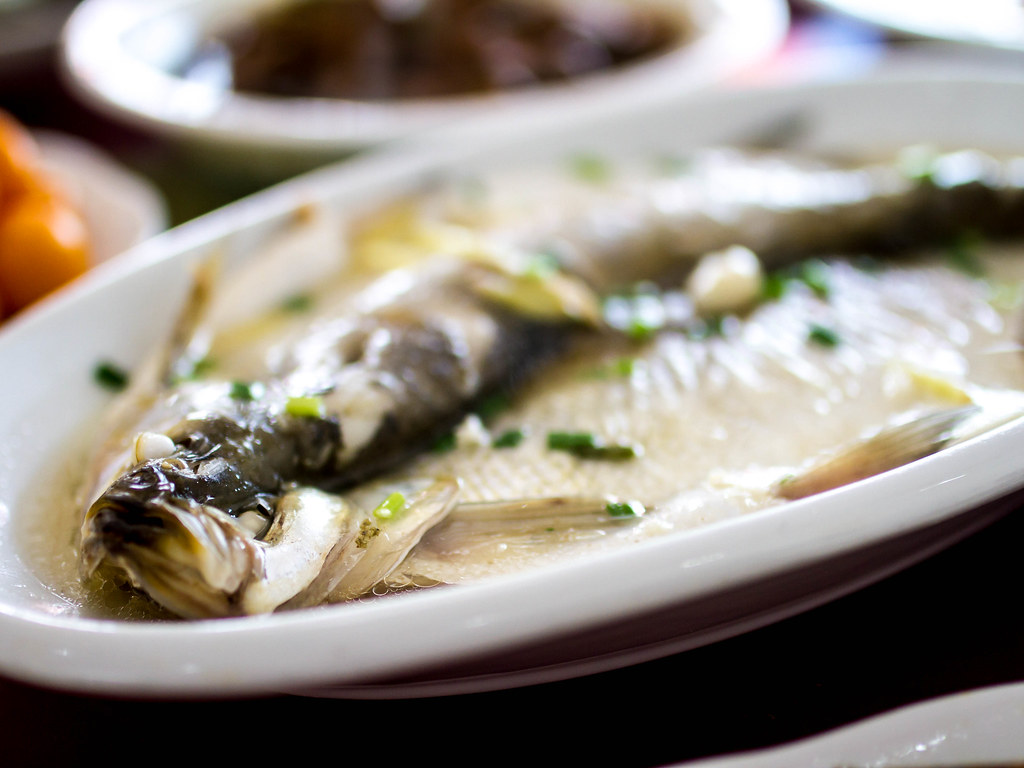

The meat of white fish, white shrimp, and white bait are tender and delicious, with high nutritional value to create a signature food in Suzhou.
Stir-fried Shredded Eel (Xiangyou Shanhu)

Eel is a popular and familiar ingredient in cuisine and stir-fried shredded eel is a signature food in Suzhou.
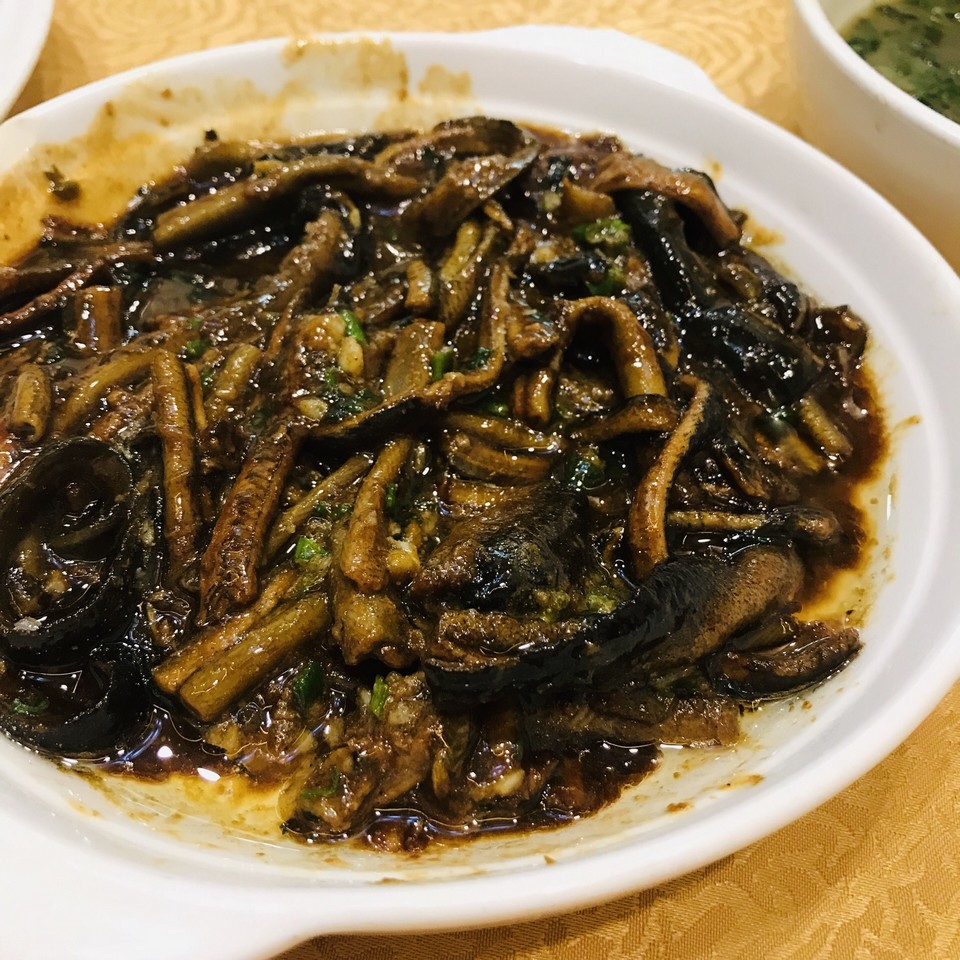
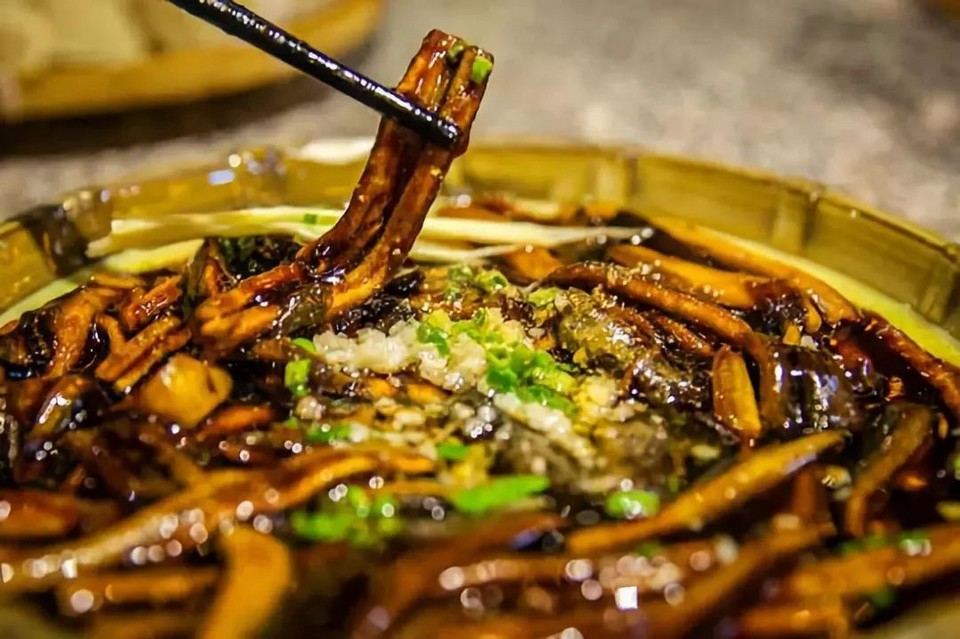
The method of preparing Xiangyou mixed eel is quite simple but brings great flavor. First, the eel is boiled and then torn into small fibers, creating sweet, chewy eel meat with abundant fiber. Next, the eel is fried with delicious green onions, ginger for added flavor, and sweet fragrant bean paste, creating an attractive and rich mixed eel dish.
When enjoying, Xiangyou mixed eel is often sprinkled with vinegar and pepper to add a sour and spicy flavor.
Rice Cake

The cake has many different variations, depending on the region and taste. Some types of cakes are filled with green beans, red beans, lotus seeds, or sweet potatoes. Some other types have added spices such as cinnamon, anise, or cloves to enhance the flavor. And some types of cakes add dried fruits such as apples, pears, or plums to be more colorful. The crispy skin is made using traditional Chinese cooking stoves. It is made from many layers of flour and sugar, shaped like a high mountain.


The cake originates from Suzhou, an ancient city in Zhejiang province, China, and was created by a mandarin in the Qing Dynasty, to commemorate his wife. This cake symbolizes the eternal love and longevity of a couple and luck, wealth, and harmony. Cakes are often made on festive occasions, such as the Lunar New Year, Qingming Festival, or Mid-Year Festival.
Cherry Pork

Cherry pork is a famous specialty of Suzhou. The pork is cooked until it’s the size of a cherry and gets its name from the bright red sauce it’s cooked in. The taste is a delightful mix of salty, sweet, and sour, creating a unique and attractive dish. Cherry pork is a suitable dish for holidays or parties.


Pine Nut Candy

The streaky pork is roughly the size of a cherry, and the bright red color of the sauce gives it its name. The pork is often served with stir-fried pea sprouts arranged alongside the rims of the pan. The well-done dish looks just like a plate of fresh cherries.

Sometimes, the chefs will place cooked pea seedlings around the pork. It tastes sweet, sour, and a little salty. The pork is so tender that it melts in the mouth.
Wansan Pork Shank
Centuries-long history and profound cultural foundations endow Zhouzhuang with well-known dishes, represented by Wansan Pork Shank in Suzhou. Wansan Pork Shank is prepared with superb materials. Well-marbled roast of hind legs of hogs are steamed or braised for a whole day in a large casserole with spices and cardamom creating a harmonious aroma.
Wansan Pork Shank is eaten in a unique style. The dish is eaten with many flavors such as green vegetables, mustard greens, and soup. The stewed meat becomes soft until the skin, fat, and meat separate from the bones. It is not greasy but delicious. The crunchy and chewy taste of the skin, the softness of the pork leg meat, and the seductive aroma make visitors forever remember this dish of Suzhou.
Wonton
Bubble wontons are a specialty of Suzhou. Served in a broth made with chicken and pork bones, the wontons float to the top like bubbles, and their air pockets fill up with soup, creating a burst of flavor when you bite into them. The wrapper of Wonton is so thin that you can see the meat stuffing hazily through it. Wonton is served in light soup with chopped shallots, fried egg shreds, dry shrimp, green ornamental vegetables, and a little seaweed.
Braised Pork Belly
A dice of sauce-braised pork ushers in spring in Suzhou. By adding red Kojic rice powder and rock candy, the pork becomes red in color, sweet in taste, soft, and crisp in texture.
Suzhou Style Fresh Pork Mooncake
Suzhou-style mooncakes are quite popular in South China. The crust is prepared according to a very special recipe, made from thin glutinous rice flour, using oil and lard to create puffiness and crispness. The cake is round and has beautiful, eye-catching colors of green, yellow, and impressive orange. When you taste it, it will leave behind a unique flavor that is hard to miss.
The filling includes pork, shiitake mushrooms, green onions, and ginger, marinated with spices and grilled. Meat-filled mooncakes have a rich, delicious flavor, are both chewy and soft, and are one of the favorite traditional cakes in Suzhou. Queues of people wait for fresh-baked moon cakes in front of old booths all year round, especially during the Mid-Autumn Festival.
Red Bean Porridge
Red bean porridge, also sugar porridge is a traditional specialty of Suzhou, Zhejiang, and is used as a vegetarian dish on the winter solstice. Porridge is made from fresh red beans, has a bright color, and delicious flavor, and is rich in fat. Glutinous rice porridge is blended with red sugar, then poured into a bowl, covered with red bean paste. They are mixed before eating.
Red bean porridge has some health benefits such as nourishing, nourishing blood, clearing heat, and diuretics. The meaning of the food brings cultural significance as red represents luck, happiness, and vitality.
Soviet Style Mooncake
Soviet Union’s formula moon cake is a traditional cuisine coming from Suzhou. The cortex of the Soviet Union’s formula moon cake is loose, and color and luster are attractive, is representative of Suzhou pastry, and that through making, crisp skin, filling processed are fabric, poster is affixed one’s seal is shaping, bake the processes such as packaging forms.
Soviet mooncakes have a round shape, symbolizing unity and alliance. Inside the cake is filled with green beans or red beans, and together with nuts such as sesame, almonds, chestnuts, and melon seeds. The mooncakes are mixed with honey or sugar to increase sweetness and nutrition. The surface of the cake is covered with a layer of beaten eggs to create a shiny golden color.
No matter what generation the mooncake originated from, the roundness of the moon signifies people’s reunion, and the roundness of the cake signifies people’s eternal life. Mooncakes are used to convey the feeling of missing one’s hometown and relatives and to pray for a good harvest and happiness, which have become the wishes of people all over the world. This feeling is as bright and clear as thousands of miles away, and it is most distinct today on this day of the year.
Green Glutinous Rice Cake
Green glutinous rice cake is a traditional dish of the Suzhou locals, in China. This cake is made from pureed glutinous rice, mixed with sugar and fruit powder. The green color of the cake is made from wormwood leaves, and the filling is sweet and fragrant red beans. The cake is shaped round, the color is green, and the taste is moderately sweet.

Green glutinous rice cakes are often given as gifts or eaten during festivals, such as Mid-Year Festival and Lunar New Year. Green glutinous rice cake is also a symbol of luck, peace, and happiness.
Street Food
In Suzhou, it is all about night street markets. They offer a variety of numnums such as steamed food, fried food, gelatinous food, seafood, tofu, grilled meat skewers, bread, and some of the most interesting desserts. You can explore these scrummy and signature dishes at every stall on foot and freely take some photos for your memorable experience.
Although Suzhou citizens are known for having more of a sweet tooth than any other part of China, visitors and locals alike can enjoy the other celebrated dishes above. Suzhou snacks have a great aftertaste; eating them will be an unforgettable experience. Travelers who have been to the city for the first time must remember to try these Suzhou authentic snacks.
Some best day tours, trips, activities and transfer services, tickets in, from and to Suzhou you can refer to
- Humble Administrator’s Garden Ticket in Suzhou
- Lion Forest Garden Admission Ticket in Suzhou
- Lingering Garden Ticket in Suzhou
- Tongli Ancient Town Ticket in Suzhou (For Mainland China ID Holders)
- Tongli Water Town Admission Ticket in Suzhou
- Tianping Mountain Ticket in Suzhou
- Master of Nets Garden Admission Ticket in Suzhou
- Suzhou & Zhouzhuang Water Village
- Suzhou Highlights Half Day Biking Tour
Are you looking for more top things to do in Suzhou: Tours, activities, attractions and other things? Let’s check it out here. And China here.































![10 best airports in Asia in 2016 [RANKED] kuala-lumpur-international-airport-best airports in asia in 2016 by skytrax ratings](https://livingnomads.com/wp-content/uploads/2016/08/29/kuala-lumpur-international-airport-best-airports-in-asia-in-2016-by-skytrax-ratings-218x150.jpg)
















